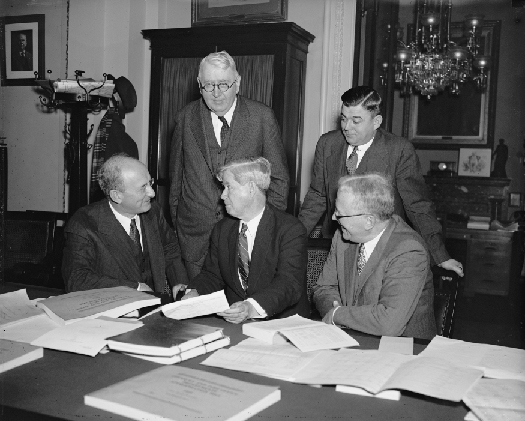| << Chapter < Page | Chapter >> Page > |
Increasingly over time, presidents have made more use of their unilateral powers, including
executive order
s , rules that bypass Congress but still have the force of law if the courts do not overturn them. More recently, presidents have offered their own interpretation of legislation as they sign it via signing statements (discussed later in this chapter) directed to the bureaucratic entity charged with implementation. In the realm of foreign policy, Congress permitted the widespread use of
executive agreement
s to formalize international relations, so long as important matters still came through the Senate in the form of treaties.
Developing a budget in the nineteenth century was a chaotic mess. Unlike the case today, in which the budgeting process is centrally controlled, Congresses in the nineteenth century developed a budget in a piecemeal process. Federal agencies independently submitted budget requests to Congress, and these requests were then considered through the congressional committee process. Because the government was relatively small in the first few decades of the republic, this approach was sufficient. However, as the size and complexity of the U.S. economy grew over the course of the nineteenth century, the traditional congressional budgeting process was unable to keep up.
Things finally came to a head following World War I, when federal spending and debt skyrocketed. Reformers proposed the solution of putting the executive branch in charge of developing a budget that could be scrutinized, amended, and approved by Congress. However, President Woodrow Wilson , owing to a provision tacked onto the bill regarding presidential appointments, vetoed the legislation that would have transformed the budgeting process in this way. His successor, Warren Harding , felt differently and signed the Budget and Accounting Act of 1921. The act gave the president first-mover advantage in the budget process via the first “executive budget.” It also created the first-ever budget staff at the disposal of a president, at the time called the Bureau of the Budget but decades later renamed the Office of Management and Budget ( [link] ). With this act, Congress willingly delegated significant authority to the executive and made the president the chief budget agenda setter.

The Budget Act of 1921 effectively shifted some congressional powers to the president. Why might Congress have felt it important to centralize the budgeting process in the executive branch? What advantages could the executive branch have over the legislative branch in this regard?
The growth of presidential power is also attributable to the growth of the United States and the power of the national government. As the nation has grown and developed, so has the office. Whereas most important decisions were once made at the state and local levels, the increasing complexity and size of the domestic economy have led people in the United States to look to the federal government more often for solutions. At the same time, the rising profile of the United States on the international stage has meant that the president is a far more important figure as leader of the nation, as diplomat-in-chief, and as commander-in-chief. Finally, with the rise of electronic mass media, a president who once depended on newspapers and official documents to distribute information beyond an immediate audience can now bring that message directly to the people via radio, television, and social media. Major events and crises, such as the Great Depression, two world wars, the Cold War, and the war on terrorism, have further contributed to presidential stature.
The delegates at the Constitutional Convention proposed creating the office of the president and debated many forms the role might take. The president is elected for a maximum of two four-year terms and can be impeached by Congress for wrongdoing and removed from office. The presidency and presidential power, especially war powers, have expanded greatly over the last two centuries, often with the willing assistance of the legislative branch. Executive privilege and executive orders are two of the presidency’s powerful tools. During the last several decades, historical events and new technologies such as radio, television, and the Internet have further enhanced the stature of the presidency.

Notification Switch
Would you like to follow the 'American government' conversation and receive update notifications?